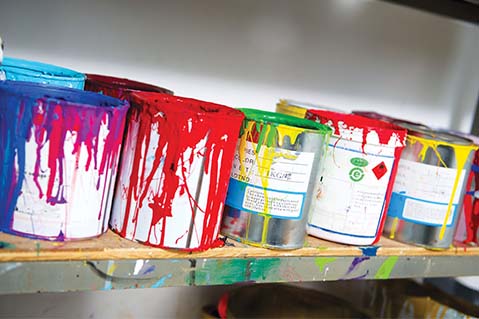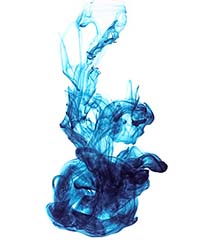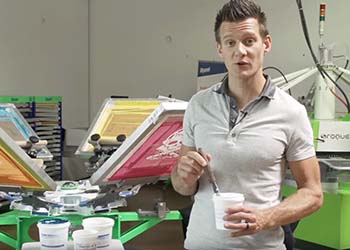Strategy August 19, 2016
How to Choose the Right Ink for Your Screen Prints
Screen printing seems simple: burn a design, put down some ink, move a squeegee, in some cases cure a print, and then move on to the next color until the entire design is printed. Any screen printer will tell you, though, that printing a design isn’t that simple. The type of fabric matters. The type of ink matters. The best and most successful designs are a marriage of ink and fabric, working with the design to create a whole. We’ve got expert answers.

Dye migration:
“Dye migration is basically just as it sounds; small dye particles moving from one place (fabric) to another (ink). This causes an unwanted change or tint in the ink color,” say decorator experts from Sharprint. To avoid dye migration when printing polyester, it might be wise to purchase an ink formulated specifically for printing on polyester, or to add a low-cure additive to the ink you intend to use. Inks that cure at lower temperatures are one of the key factors in avoiding dye migration.
Nylon:
Remember that nylon fabrics can shrink when heated. International Coatings advises running the nylon item through the dryer before it’s printed. Also, heat test a production sample to ensure it can stand up to the heat necessary to cure the ink. As with polyester, there are inks made specifically for printing on nylon. If a shop will be printing a large number of nylon jackets, it’s worth investing in ink that’s specifically formulated for printing on nylon.
Dark colors: 
You might need to print an underbase, which PrintPapa tells us “is a layer of ink (generally white or other light color) that’s printed as a ‘base’ on a dark shirt for other colors to sit on.” The underbase allows the top colors to shine. However, for best color representation, the underbase shouldn’t be considered a color in the design. As screen-printing veteran Terry Combs, co-host of The 2RegularGuys podcast, says, “Your underbase should be a minimal laydown of ink to give you an opaque base, but the thinnest final print you can achieve. Using a highlight white as the final color will give you a much more professional product."
Cotton:
The range of ink choices can be wide, but you may need to choose between plastisol and water-based ink. These, as many screen printers know, are the two main inks for textile printing. Water-based ink uses either dyes or pigments in a suspension with water as solvent. The water evaporates, curing the ink. Evaporation can happen by allowing the ink to dry at room temperature, or in a forced air dryer. Plastisol is a solvent-free PVS-based system, and needs heat to cure.

